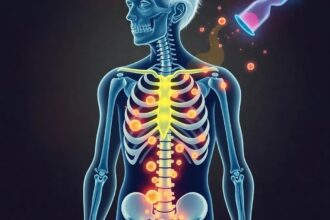Explore the science behind heat and cold therapies, their physiological benefits, and their role in enhancing recovery, reducing inflammation, and promoting longevity.
Heat and cold therapies are transforming health and recovery by leveraging the body’s natural responses to temperature extremes.
Introduction to Thermal Regulation
Thermal regulation, the body’s ability to maintain its core temperature, has become a cornerstone of modern health and wellness strategies. Heat and cold therapies, such as saunas, cryotherapy, and contrast therapy, are gaining traction for their profound effects on recovery, inflammation, and longevity. This article delves into the science behind these therapies and their transformative potential.
The Physiology of Heat Therapy
Heat therapy, including sauna use, has been shown to improve circulation, reduce muscle tension, and promote relaxation. According to a study published in JAMA Internal Medicine
, regular sauna use is associated with a reduced risk of cardiovascular diseases and improved overall mortality rates. Dr. Jari Laukkanen, a researcher at the University of Eastern Finland, states, Sauna bathing induces a cardiovascular response similar to moderate exercise, which may explain its health benefits.
The Science of Cold Therapy
Cold therapy, such as cryotherapy, works by constricting blood vessels and reducing inflammation. A 2020 study in Frontiers in Physiology
found that cold exposure activates cold-induced thermogenesis, a process that boosts metabolism and promotes fat loss. Dr. Rhonda Patrick, a renowned biochemist, explains, Cold exposure triggers the release of norepinephrine, which enhances focus, mood, and metabolic health.
Contrast Therapy: The Best of Both Worlds
Contrast therapy, which alternates between heat and cold, is emerging as a powerful tool for recovery. A 2019 study in the Journal of Athletic Training
demonstrated that contrast therapy significantly reduces muscle soreness and accelerates recovery after intense exercise. This method leverages the benefits of both heat and cold, promoting circulation and reducing inflammation simultaneously.
Heat Shock Proteins and Cellular Repair
Heat shock proteins (HSPs) play a crucial role in cellular repair and longevity. These proteins are activated in response to heat stress and help repair damaged proteins, ensuring cellular health. Research from the National Institutes of Health
highlights that HSPs are essential for maintaining cellular homeostasis and preventing age-related diseases.
Practical Applications and Safety Guidelines
While thermal therapies offer numerous benefits, it’s essential to follow safety guidelines. For sauna use, limit sessions to 15-20 minutes and stay hydrated. Cryotherapy sessions should not exceed 3 minutes to avoid frostbite. Always consult a healthcare professional before starting any new therapy, especially if you have underlying health conditions.
Emerging Trends in Thermal Therapies
Innovations in thermal therapies, such as infrared saunas and localized cryotherapy devices, are making these treatments more accessible. According to a report by Grand View Research
, the global cryotherapy market is expected to grow significantly, driven by increasing awareness of its health benefits.
Conclusion
Heat and cold therapies are revolutionizing the way we approach health and recovery. By understanding the science behind these treatments and following safety guidelines, individuals can harness their benefits to enhance longevity and overall well-being.




